Future MacBooks could be made even thinner by using a slimmer keyboard, by switching out the butterfly mechanism for one where the keys are positioned much closer to the circuit board, reducing the amount of travel and materials required to register a key press and to actuate.
The butterfly keyboard mechanism used in the current generation of MacBook Pro models has gone through a number of revisions to fix issues with how it functions, including occasions where debris could interfere with the mechanism's operation. The issues have led to the creation of a repair program to fix the problem, but complaints about the component continue to be made.
The keyboard is also a space-occupying component of a notebook's design, with the switch mechanism providing an actuation, namely the physical movement of the key to register a press and to reset. In order to allow this to happen, a mechanism has to sit between the key and the circuit board, taking up valuable space that could be used to make the notebook design even thinner, or to provide more battery capacity.
In a patent published by the US Patent and Trademark Office on Tuesday titled "Keyboard assemblies having reduced thickness and method of forming keyboard assemblies," Apple seeks to do just that.
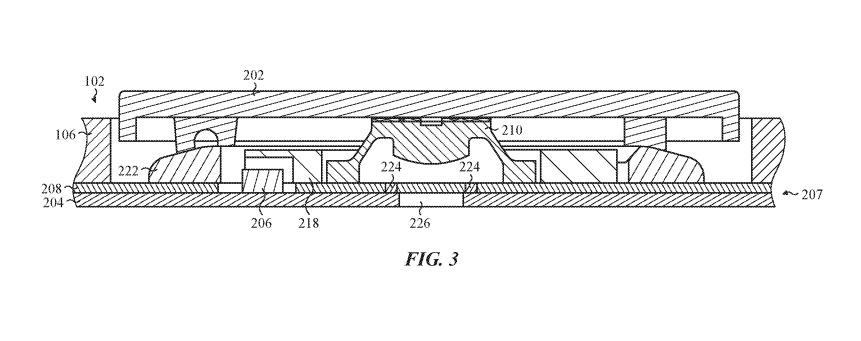 An illustration of the PCB at the bottom of the stack, with layers for the membrane, switching mechanism, and keycap.
An illustration of the PCB at the bottom of the stack, with layers for the membrane, switching mechanism, and keycap. In Apple's filing, the company suggests the use of a single membrane sheet adhered directly to the printed circuit board (PCB). A switch housing can optionally be affixed directly to the membrane layer or to the PCB, sandwiched between the two, and a dome switch coupled directly on top to the membrane layer.
Generally the membrane is not typically attached to the PCB, but is used to help facilitate the closing of a connection, to trigger the key press. By attaching the membrane completely across the PCB, this eliminates any wasted space and brings the components closer together.
Apple also reasons that, by coupling the dome switch to the membrane directly, the switch can be more easily installed, reducing assembly time.
To make the electrical connection, the membrane could consist of a series of membrane pads constructed from a "substantially flexible, electrically conductive material," though the membrane could also be attached to the PCB using a conductive adhesive to do a similar job once dried.
Alternately, the system could simply use a sandwiched dome switch.
While Apple does suggest the use of a "hinge mechanism positioned adjacent the switch housing" for installing the keycap above its respective dome switch, it is not limited to the existing butterfly system. Apple proposes the use of "any suitable hinge mechanism," listing off a V-shaped hinge, scissor hinge, telescoping hinge, and sliding hinge mechanism as examples alongside butterfly.
Apple files numerous patent applications on a weekly basis, but while the presence of a filing indicates areas of interest for the company's research and development efforts, it does not guarantee the concepts will make an appearance in a future product or service.
There have been many patent filings over the years where Apple attempts to refine or replace the existing mechanism with an improved version. The most recent attempt in August suggested the use of light in an "Optical Keyboard" to replace switches entirely, with key presses obscuring a light source and triggering a press.
There has also been the suggestion of using glass panel keyboards with force detection for each key, the addition of touch-sensitive keys, and replacing the keyboard section of a MacBook entirely with a touchscreen.
 Malcolm Owen
Malcolm Owen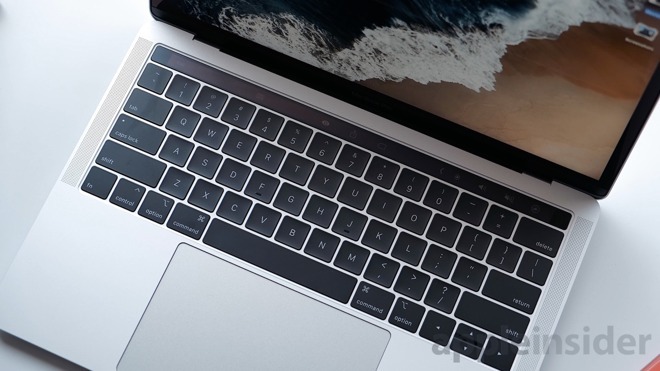
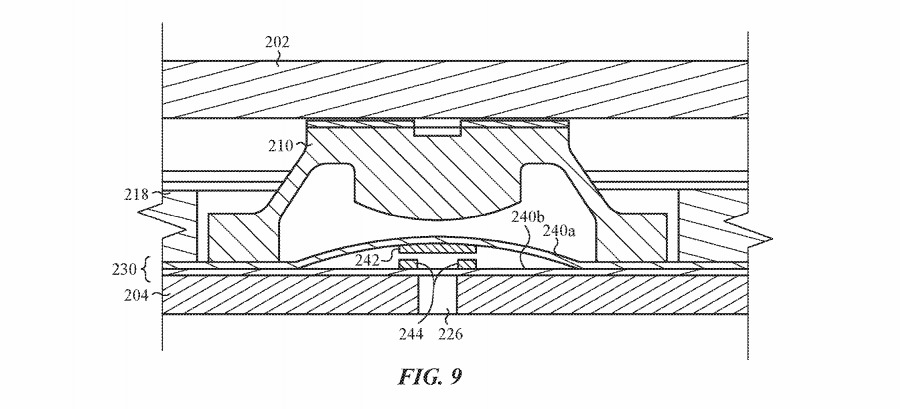







-m.jpg)






 Amber Neely
Amber Neely
 Sponsored Content
Sponsored Content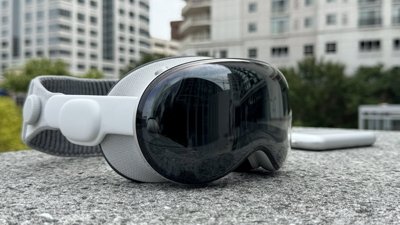
 William Gallagher
William Gallagher
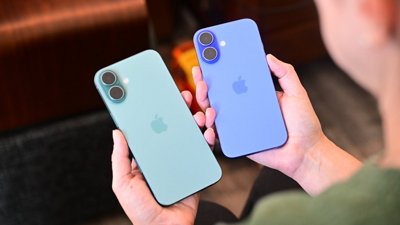


 Chip Loder
Chip Loder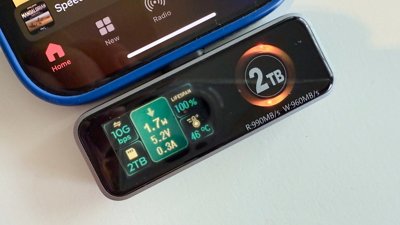
 Mike Wuerthele
Mike Wuerthele

-m.jpg)






49 Comments
I'm sure this won't cause any problems.
Thinness is cool and all, but I type thousands of words a day, and I don't move my laptop around all that much. Short key travel and lack of wrist elevation both reduce comfort and the latter is a well-studied cause of repetitive stress problems. Comfort when I'm working is far, far more important to me than comfort when I'm carrying the thing around. Modern laptops from almost any manufacturer are already light and thin enough that further progress seems unnecessary.
I think the thinness has gone further than is sensible on the phones, too. The camera bump exposes the critical covering of the camera to scratches and damage, and means that the phone doesn't lay flat. Sure, both of these problems can be addressed with a case, but what's the point of the beautiful design if it's just going to go into a case?
If there's one thing I don't like about the Macbook, it's the fact that it's too thick. LOL.
Actually, there are several things I don't like about my 2017 Macbook and chief among them is the crappy keyboard. In addition to feeling worse than most keyboards (including the MS Surface detachable keyboard -flame away but it's better), the whole laptop could be ruined by a bit of dust or lint. The trackpad also does very poorly at discerning intentional touches from unintentional hits from the palm - it very often sends the cursor where I don't want it. It's damned hard to use the keyboard without touching the trackpad at all. Now, I really don't think these plans from Apple are going to improve the keyboard in the areas where I have problems with it.
Ho thin do they want the laptop to be, seriously? Give me back the 2015 model with SD Card any time over these new models, I hate the new keyboard, it is noisy and not comfortable, bring back the old design!